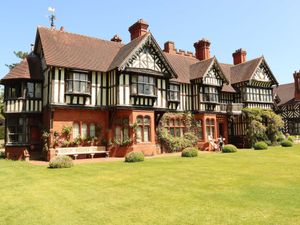Historic manor house to get new garden path
A Victorian Wolverhampton tourist attraction that attracts more than 100,000 visitors every year is to have a new path laid through its spectacular rose garden to provide better access for day-trippers.

Wightwick Manor, a large grade l listed country house located at Wightwick Bank, is one of the National Trust’s most popular draws and a major local landmark.
Planners this week gave full approval for the creation of the all-weather public pathway leading to the property’s 17 acres of formal grade ll registered gardens. At present, the approach to the main house and kitchen garden consists of self-binding gravel paths. The rose garden is located between the two and is grassed.

In a report to planners, Molly Wright from the National Trust said: “The proposed path is the first stage of incremental improvements to access points across the site. This phase is considered to be a missing link between existing paths converging at the south and northwest points of the rose garden.
“Increased visitor numbers passing through this area of the garden has had a considerable impact on the current grass surface, resulting in a low standard of presentation and access. The new path will ensure safe passage without detracting from the overall design of this part of the garden.
“It will be 1.8m wide and 48m in length, with the surface material made from self-binding Herefordshire-Red/Deansett gravel, which is consistent with the other pathways around the manor and outbuildings.
“We are aiming to improve our access standards across the Trust, which will result in a much better visitor experience for disabled people especially. As part of this, we will be aiming to keep our path surfaces well maintained, suitably drained and free from potholes,” she added.
Wightwick Manor was constructed in 1887 for Samuel Theodore Mander. It was designed in two phases by Edward Ould, a specialist in timber framing in the Old English style. The house is filled with Morris & Co designs and Pre-Raphaelite collections. Many of these items are also personal, creating a very warming and lived in atmosphere.
In a statement granting approval of the application, planning officer Ms Nussarat Malik said: “The design and appearance of the new path will create a more accessible route for all visitors to the site. The current path has deteriorated and is difficult to use when wet, particularly for disabled visitors in wheelchairs. This will enhance the experience of visitors and preserve the local conservation area.”




